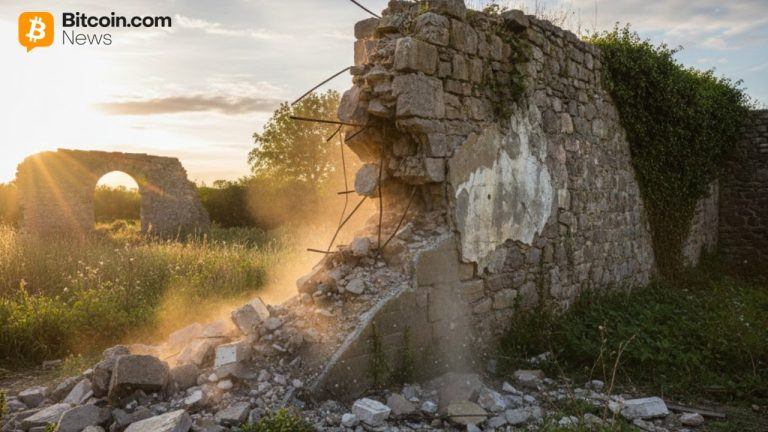Midwest wind power projects stall amid Trump policy reversal
6 min read

Bloomberg News
Before it began generating energy, Prosperity Wind generated some controversy.
But the wind power project, which spans DeLand, Mansfield and Galesville in central Illinois, and which includes turbines, facilities and new roads, is now on track to produce electricity from a 300 megawatt utility-scale wind farm.
“It only became operational this year,” said Kerri Nusbaum, a zoning officer for Piatt County, Illinois.
“It’s generating power onto the grid,” she said, but added she doesn’t know if it is yet living up to its pledge to produce enough energy to power 99,000 homes.
“They submitted a very large report about the economic impact that they believed it would have,” she said of Apex Clean Energy, the Charlottesville, Virginia-based clean energy company behind the project, and suggested the jury is still out on that.
With the exception of some out-of-state landowners, many in Mansfield opposed the project, Sangamon Township Supervisor Mike Nolan said. (Galesville, which does not host any of the project’s wind turbines, is located in Sangamon Township; Mansfield is in Blue Ridge Township.)
But the state passed a law in 2023 that
“It was a pretty controversial project,” Nolan said. “DeLand was not against it because they’re small, they need the money.”
Prosperity Wind is one of the projects cited in a recent federal court lawsuit filed by 17 states against the Trump administration. The lawsuit targets a presidential memorandum ending federal approvals for wind energy development.
Other projects in the Midwest were not completed, and remain stalled in the wake of the Trump administration’s reversal on wind power.
Michigan’s Lake Erie Renewable Energy Resilience Project was supposed to boost manufacturing in the Great Lakes region.
By upgrading the Port of Monroe on Lake Erie and improving safety conditions for industry there, the project was also set to expand trade through a port that the Center for American Progress called “a major distributional hub for wind energy manufacturing.”
The Port of Monroe “plays an increasingly crucial role in supporting manufacturing, trade, and transportation in the Great Lakes region. However, it has degraded significantly in recent years,” CAP
“This funding is crucial to an area very significant to Michigan’s economy that is in great need of workers, improvements and enhancements,” then-state Rep. Joe Bellino, R-Monroe, said in a 2022
President Donald Trump had promised to bring manufacturing jobs back to Michigan and to halve energy costs during his first year in office in
And with the rise of artificial intelligence and data centers, major drains on the power grid, some experts now warn an “all of the above” approach is necessary to keep energy costs affordable.
In a
“The data centers driving the AI race require gigawatts of stable electricity, forcing governments to treat power as a strategic asset on par with oil in the 20th century,” the report’s authors wrote. “If you assume energy supply growth will be prioritized above other considerations, then an ‘all of the above’ approach will be taken.”
China brought 80 gigawatts of new wind capacity online in 2024, the report notes, bringing wind to 10% of the country’s total electricity generation. The U.S. lags far behind China’s total wind capacity of 520 GW, with 150 GW installed at the end of 2024.
But on Aug. 29, Transportation Secretary Sean Duffy directed the Department of Transportation’s Maritime Administration to end five Port Infrastructure Development Program projects, cutting off the $11.05 million in federal funding for the Lake Erie project in Michigan.
A
The termination of wind power-related projects by DOT is the latest salvo in a Trump administration push
In May, Michigan, Illinois and Minnesota joined 14 other states and the District of Columbia to sue Trump and a long list of officials in the Interior, Agriculture, Energy, Commerce and Treasury Departments, the Army Corps of Engineers and the Environmental Protection Agency over the wind memo.
The memo came on the same day Trump declared a national energy emergency.
“The Wind Directive has stopped most wind-energy development in its tracks, despite the fact that wind energy is a homegrown source of reliable, affordable energy that supports hundreds of thousands of jobs, creates billions of dollars in economic activity and tax payments, and supplies more than 10% of the country’s electricity,” the lawsuit says.
Spokespeople for the Department of the Interior, the Army Corps of Engineers and the EPA declined to comment on current or pending litigation.
The Trump administration is also creating pressure for sustainability projects by cutting federal infrastructure spending and other aid to state and local governments, leading to budgetary crunches that have impacted the green energy transition.
Last week, Generation Investment Management released its
“Public finance for the sustainability transition is coming under severe pressure from strained budgets and competing priorities,” the investment management firm wrote.
Meanwhile, “bank financing for fossil fuels rose in 2024, after having fallen the previous two years. It remains to be seen whether this is the beginning of a broader trend,” it said.
The International Energy Agency projects $2.2 trillion will be spent on clean energy development this year, double the $1.1 trillion projected to be invested in fossil fuels. But the GIM report noted that is less than half the spending on clean energy that is needed by 2030.
“It is nothing short of a tragedy that one of the world’s most dynamic economies will be retreating as the low-emissions technologies of the future are implemented and commercialized everywhere else,” GIM Chairman Al Gore said in a press release accompanying the report.
The wind memo lawsuit notes that wind power made up 12.27% of all electricity generated in Illinois in 2023, contributing over 21 million megawatt hours to the grid.
The state’s Climate and Equitable Jobs Act, enacted in 2021, calls for 100% carbon-free energy generation by 2045 — a goal that rests on the state’s ability to bring new wind projects online.
“New sources of electricity are needed to meet unexpected projected load growth Illinois is facing due to data centers and other large load customers, while simultaneously maintaining a cost-effective power supply for Illinois residents,” the lawsuit says.
Michigan gets about 7% of its total electricity consumption from wind generation, or 3,400 megawatts. According to the lawsuit, Michigan utilities plan to develop or acquire over 6,560 megawatts of land-based wind generation by 2035, most of which is in development now.
Minnesota’s wind energy accounted for 25% of the state’s total net generation in 2023, up from 22% in 2021. Under the Minnesota Climate Action Framework, the state is supposed to produce 45% of its total electricity from wind power by 2034.
Wind farms have been a boon to the state’s agricultural communities, the lawsuit argues. Minnesota’s production tax credit allocates funds to counties and townships based on wind generation, and landowners receive annual payments if they host wind turbines.
There were more than 50 operating, retrofitted or refurbished, permitted, in process, and expected wind-energy facilities in the state as of May.
In Michigan, utility filings show projected wind development will require an investment of about $15 billion, according to the lawsuit. That development is expected to save Michigan utility customers $2.5 billion net present value through 2045 compared to natural gas plant generation.
“Reducing the development of this least-cost renewable resource relative to other renewable resources will raise the cost of coming into compliance with Michigan Public Act 235, as borne by Michigan ratepayers,” the lawsuit adds.







